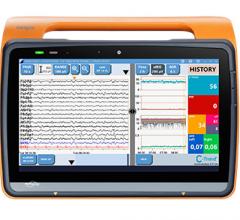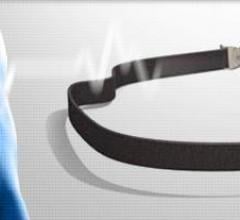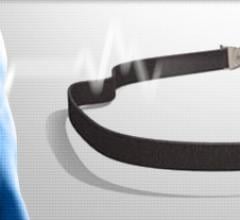November 15, 2007 – Masimo reported a new independent clinical study demonstrates the ability of Masimo SET Perfusion Index (PI) to improve detection of congenital heart defects (CHD) in newborns with duct-dependent systemic circulation.
Even when routine neonatal physical examinations and saturation screenings fail, PI may help to accurately detect CHD, enabling life-saving early detection and critical intervention before discharge from the hospital. It has been documented that up to 30 percent of all deaths from CHD in the first year of life are due to unrecognized cases being discharged to the home.
PI is a measurement featured in the Masimo Rainbow SET technology platform that reflects the real-time changes in peripheral blood flow at the monitored site and the strength of the plethysmographic signal displayed on the pulse oximeter. In addition to improving the detection of CHD in infants, the ability to noninvasively and continuously measure PI could enable faster identification of clinically significant changes in a patient’s physiologic status, including potentially hypothermia, hypovolemia, shock and/or sepsis.
In the study, entitled "Noninvasive Peripheral Perfusion Index as a Possible Tool for Screening for Critical Left Heart Obstruction,” conducted at the Institute of Clinical Sciences, Gothenburg University, Sweden, A. de-Wahl Granelli and I. Ostman-Smith observed whether PI was a dependable indicator in critically-ill newborns to enable its use for congenital heart disease screening purposes. The researchers indicated that several studies have reported that babies with congenital heart disease are not detected by routine neonatal physical examinations and that neonatal screening fails mainly in children with duct-dependent systemic circulation.
Granelli and Ostman-Smith conducted single pre- and postductal measurements of PI using the Masimo Radical SET Pulse Oximeter in a total of 10,000 healthy newborns (ranging in age from one hour to five days) and established PI reference values of healthy babies. In establishing reference values that validate possible PI indices for normal vs. disease state in newborns, researchers were able to show that low PI values may correspond to illness.
Study results showed that combined neonatal examination and oxygen saturation screening detected only 78 percent of the newborns with LHOD, but when PI was added, 100 percent of all newborns with LHOD showed abnormalities, indicating that PI may reflect abnormal blood flow from the heart in CHD newborns. All LHOD newborns had either pre- or postductal PI values below the interquartile cut-off value of 1.18 and five had values below a potential cut-off of 0.70, leading researchers to conclude that “PI values lower than 0.70 may indicate illness and a value less than 0.50 indicates definite underperfusion.” Study findings suggest that a combination of saturation screening cut-offs with PI value cut-offs may help improve the early detection of congenital heart defects that have duct-dependent systemic circulation. As a result, researchers concluded that PI is a “promising tool for improving the detection of critical congenital heart disease with duct-dependent systemic circulation.”
For more information: www.masimo.com


 December 26, 2023
December 26, 2023 








